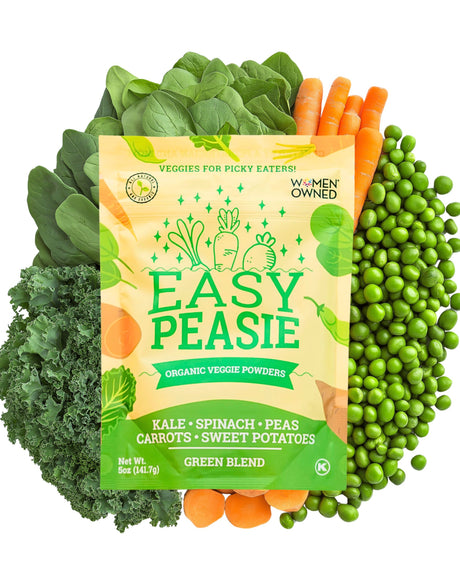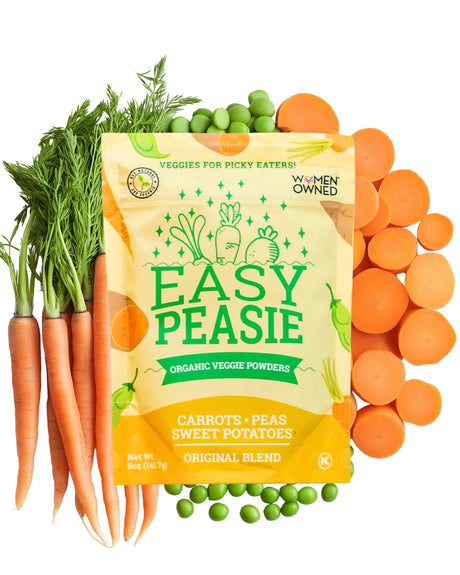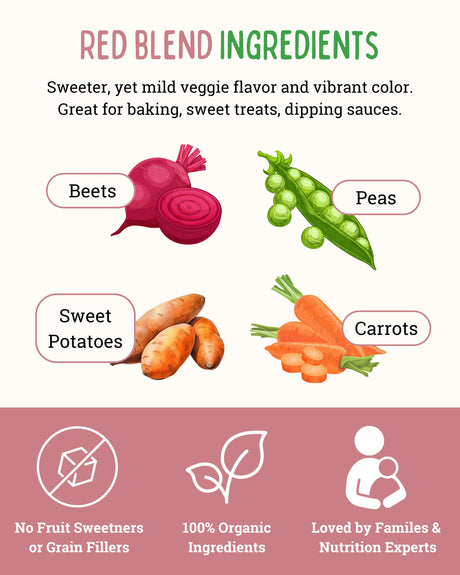Hydration: A Cornerstone of Children's Health
Hydration is often hailed as a pillar of health, and for good reason. Water is the elixir of life, and for our little ones, it's the fuel that keeps their energetic engines running smoothly.
From aiding digestion to ensuring proper circulation, hydration plays a pivotal role in nearly every bodily function. It's particularly crucial for children, whose bodies are not just maintaining but also growing and developing at a rapid pace.
Beyond the Heat: Hydration in All Seasons
There's a widespread belief that the need for a tall glass of water diminishes with the mercury. Yet, hydration isn't a seasonal affair—it's a year-round commitment. As the cooler weather sets in, it's easy to overlook the signs of thirst, but our bodies' need for water remains.
Children, engrossed in play and learning, may not always recognize the subtle cues of dehydration, making it all the more essential for caregivers to keep hydration at the forefront, regardless of the weather.
Understanding Hydration
The ABCs of Hydration
Hydration is more than just drinking water; it's about ensuring that every cell, tissue, and organ in our little ones' bodies has enough fluids to function optimally. For children, who are more prone to dehydration due to their smaller body size and higher turnover of water and electrolytes, staying hydrated is essential. It aids in digestion, maintains body temperature, supports physical performance, and even keeps their cognitive abilities sharp.
Cool Weather, Hidden Thirst
As the crispness of autumn or the chill of winter replaces the summer heat, children's thirst response can diminish. They may not feel as parched as they do during a sweltering July afternoon, but their bodies still need regular fluid intake. Cooler weather can also lead to more indoor activities and heating, which can dehydrate the skin and respiratory system. It's a stealthy shift that can quietly affect a child's hydration levels without the obvious sweaty reminders of a hot day.

Spotting the Subtle Signs
Dehydration in children might not always wave a red flag. Sometimes, it's the subtler signs that we need to be vigilant about. These can include dry or chapped lips, a decrease in energy levels, fewer bathroom breaks, or even irritability. A child who is less active than usual or complaining of headaches and dizziness could also be showing signs of dehydration. It's these little clues that can help parents and caregivers ensure that their kids are adequately hydrated, even when they're not actively reaching for a water bottle.
Daily Water Intake Recommendations
Hydration Essentials
Ensuring that children consume the right amount of water daily is crucial for their health and well-being. Water is a key component of bodily functions, aiding in digestion, circulation, and even cognitive performance. It's important to understand that children's water needs can vary based on several factors, including their age, activity level, and the climate they live in.
Age-Appropriate Hydration
For toddlers and young children, a general guideline is about 5 cups of water a day. As children grow, their need for water increases. School-aged children should aim for 7 to 8 cups, while teenagers should increase their intake to 8 to 10 cups daily.
Remember, these are just starting points; active children or those living in warmer climates may require more.
Activity and Environment
Physical activity naturally increases the need for hydration. Kids who are involved in sports or play outdoors frequently should drink additional water to compensate for the loss through sweat.
Similarly, environmental conditions play a role. Even in cooler weather, heated indoor environments can lead to dehydration, making it just as important to stay hydrated in the winter as in the summer.
Signs of Adequate Hydration
A good indicator that children are drinking enough is the color of their urine. Aim for light yellow; darker urine can be a sign of dehydration. Encouraging regular water breaks and keeping a water bottle handy can help meet these daily goals. It's all about creating healthy habits that ensure they stay well-hydrated throughout the day.
Hydration Beyond Water
A Spectrum of Hydrating Fluids
While water is the quintessential drink for hydration, it's not the only player in the game. Children can also receive hydration from a variety of other fluids.
Milk, natural fruit juices, and herbal teas are excellent supplements that contribute to overall fluid intake. It's important, however, to be mindful of the sugar content in some beverages and opt for sugar-free or low-sugar options when possible.

Fruits and Veggies: Nature's Hydrators
Don't overlook the power of fruits and vegetables to contribute to your child's hydration. Water-rich fruits like watermelon, strawberries, and oranges, or vegetables like cucumbers, lettuce, and celery, can be a significant source of fluids.
These natural hydrators come with the added bonus of essential vitamins and minerals, making them a dual force for nutrition and hydration.
Warmth and Wellness
As the temperature drops, children might not always reach for a cold glass of water. This is where warm soups and beverages come into play. A comforting bowl of chicken noodle soup or a warm cup of apple cider not only warms the body but also provides necessary fluids.
These warm options can be particularly appealing and can serve as a gentle reminder to stay hydrated even when it's cold outside.
Creative Hydration Solutions
Getting creative with hydration can make it more appealing to kids. Try making homemade popsicles with fruit juice or serving smoothies for a nutritious and hydrating treat.
Remember, hydration doesn't have to be boring. It's all about finding those fun and tasty solutions that keep kids sipping throughout the day, regardless of the weather.
Fun Hydration Tips and Tricks
Making Hydration a Blast
Encouraging kids to drink more water can be a fun adventure rather than a chore. Turn hydration into a game by setting up a colorful chart where they can track their daily water intake with stickers or markers. Offer rewards for meeting their hydration goals, like an extra bedtime story or a family game night.
DIY Flavored Water: A Splash of Fun
Plain water can be a hard sell for kids, so why not jazz it up? Create DIY flavored waters by infusing pitchers with slices of fruits like lemons, limes, berries, or cucumbers.
Let your kids help with the preparation, choosing their favorite flavors, and even mixing their own concoctions. It's a great way to introduce them to new fruits and the concept of 'eating the rainbow' in a fun, interactive way.

Hydration Challenges: Sip by Sip
Set up hydration challenges that can be both educational and entertaining. For instance, challenge your kids to drink a certain amount of water before lunchtime, and if they succeed, they get to choose what the family plays after dinner.
Or, have a "water relay race" where each family member must drink a glass of water before passing the baton. It's a playful approach to ensure everyone stays hydrated.
Water Bottle Personalization
Let each child pick out or decorate a special water bottle. Stickers, markers, and even paint can be used to personalize their hydration tool, making them more excited to use it. A personalized water bottle can become a treasured item that they're proud to carry and use throughout the day.
Educational Hydration
Use hydration as a teaching moment. Discuss with your children how water is essential for all life forms, using age-appropriate books or documentaries to illustrate the point. Understanding the broader importance of water can instill a sense of responsibility and curiosity about hydration and health.
Educating Kids on the Importance of Staying Hydrated
Hydration 101 for Kids
When it comes to teaching kids about hydration, simplicity is key. Explain that water is like the oil in a car—it keeps everything running smoothly. From helping their heart pump blood to allowing them to run and play without getting tired, water is a superpower liquid that their bodies need to stay happy and healthy.
Interactive Learning: The Water Works Game
Create an interactive game where kids can learn about the body's need for water. Use a simple diagram of the human body and have children place blue stickers along the parts that need water the most, like the brain, muscles, and even skin. This visual and hands-on activity reinforces the concept that water is crucial for all body functions.
Story Time: The Tale of a Drop of Water
Craft a story about a little drop of water's journey through the body, highlighting all the good it does along the way, from giving energy to muscles to helping digest food. This narrative approach can make the concept of hydration more relatable and memorable for young minds.
Hydration Science Experiments
Engage kids with simple science experiments that demonstrate hydration's effects. For example, show how a plant wilts without water and revives when watered, drawing parallels to how our bodies feel when we're dehydrated versus properly hydrated. It's a tangible lesson on the importance of regular water intake.
The Hydration Station
Set up a 'hydration station' in your home where kids can learn about and track their water intake. Equip it with measuring cups, a water dispenser, and a chart to log their consumption. This dedicated space not only educates but also empowers them to take charge of their hydration.
Hydration-Friendly Recipes
Sipping on Sunshine: Kid-Approved Hydrating Drinks
It's not just about water; hydration can be delicious and fun! Whip up some kid-friendly smoothies with a base of coconut water, packed with electrolytes and flavor.
Blend with their favorite fruits like strawberries or mangoes for a tasty treat. Or try making homemade fruit popsicles—just freeze fruit juice with bits of whole fruit for a hydrating and healthy snack.
Warmth and Wellness: Soups for Hydration
Cooler weather calls for warming foods that also hydrate. Chicken noodle soup or a simple vegetable broth can be both comforting and hydrating.
The broth provides fluids and electrolytes, while the veggies offer additional nutrients and fiber. For a creamy twist without the cream, blend cooked cauliflower into the broth for a silky-smooth cauliflower soup that's hydrating and hearty.

Hydration with a Crunch: Cucumber Sandwiches
Cucumbers are over 95% water, making them a perfect hydrating food. Create fun and crunchy cucumber sandwiches by spreading cream cheese on whole-grain bread and adding cucumber slices.
Top with a sprinkle of dill for an aromatic touch. It's a simple, hydrating, and nutritious snack that kids can help make and enjoy.
Sweet Hydration: Melon Balls and Berry Skewers
Take advantage of fruits with high water content for a sweet, hydrating treat. Use a melon baller to scoop out watermelon, cantaloupe, and honeydew balls.
Thread these with berries onto skewers for a fun and colorful fruit kabob. It's a snack that's sure to hydrate and delight any child.
Hydrating Desserts: Yogurt and Fruit Parfaits
Layer Greek yogurt with fruits like berries, peaches, or kiwi, which are full of water and vitamins. The yogurt provides a creamy texture and a boost of protein, while the fruits add a natural sweetness and hydration. These yogurt and fruit parfaits can be a delicious breakfast or a healthy dessert option.
Monitoring Hydration
Staying on Top of Sips: Hydration Check-Ins
As a parent, keeping a gentle but watchful eye on how much your child drinks throughout the day is key. Regular check-ins at meals and snack times can help ensure they're sipping regularly. Consider using a hydration chart or app where kids can track their intake and earn rewards for meeting their daily water goals.
Thirst Isn't the First Sign: Preemptive Hydration
Waiting for kids to feel thirsty might mean they're already slightly dehydrated. Encourage preemptive drinking, especially before outdoor activities or playtime. For younger children, make a game out of drinking water, like "beat the thirst," to make hydration a proactive habit.
Colorful Clues: The Urine Test
One of the simplest ways to monitor hydration is to look at the color of urine. Teach your kids that a light straw color is a good sign, while anything darker might mean they need to drink more fluids. Make it a routine to notice and discuss this, so they become accustomed to self-monitoring their hydration.
When to Ramp Up the Fluids
There are times when children need to increase their fluid intake, such as when they're physically active, if they're feeling under the weather, or when the indoor heating is cranked up during cooler months. During these times, offer more fluids and foods with high water content.
Recognizing the Red Flags: Signs of Dehydration
Educate yourself and your children on the signs of dehydration, which can include dry mouth, headaches, dizziness, and fatigue.
If you suspect your child is dehydrated, increase fluid intake immediately and consider an electrolyte solution if necessary. If symptoms persist, seek medical attention to ensure safety and proper care.
Overcoming Hydration Hurdles
Tackling the Picky Drinker Dilemma
For the picky drinker, plain water might not make the cut. To overcome this, introduce flavor-infused waters using natural ingredients like cucumber, berries, or citrus.
These can pique their interest and make hydration more appealing. Remember, the goal is to make water their go-to, so start with subtle flavors and gradually reduce any added sweetness over time.
Hydration on the Move: Portable Solutions
Life's busy pace can make it challenging to ensure kids stay hydrated. Equip them with fun and functional reusable water bottles that they can carry everywhere.
Look for bottles with measurement marks, which can help kids track their intake and set goals. For the tech-savvy family, consider a smart water bottle that reminds kids to drink at regular intervals.
The Reluctance to Break for Drinks
Sometimes kids are having too much fun to stop for a sip. To counter this, establish regular water breaks during playdates or sports activities.
Make these breaks a part of the routine, just like tying shoelaces before running. For younger children, you can use a timer with a fun sound that signals it's time to hydrate.
Making Hydration a Family Affair
Children often mimic the habits of their parents. Make sure you're setting a good example by staying well-hydrated yourself.
Discuss the importance of drinking water as a family, and consider setting up a family hydration challenge where everyone tracks their water intake and celebrates meeting their daily goals together.
Creative Hydration for the Reluctant Sipper
If your child resists drinking enough fluids, get creative. Serve water-rich fruits and veggies like watermelon or cucumber as snacks.
Offer warm, flavorful broths or soups which can be both comforting and hydrating. Sometimes, changing the temperature or flavor profile can make all the difference in meeting their hydration needs.
Final Thoughts
Embracing Hydration as a Keystone of Health
As we wrap up our discussion, let's reaffirm the vital role of hydration in our children's health. It's a year-round commitment, not just for the sweltering days of summer. Cooler weather can be deceptive, masking the signs of dehydration, but our vigilance must remain steadfast.
Creativity: The Wellspring of Hydration
We've explored a plethora of strategies to ensure our little ones stay adequately hydrated. From infusing water with natural flavors to incorporating hydrating foods into their diet, the key is creativity. Remember, making hydration fun can spark a lifelong appreciation for the simple act of drinking water.
A Community Effort in Hydration
Lastly, let's not underestimate the power of sharing and community. Every child is unique, and what works for one may not work for another. By sharing our stories and strategies, we can support each other in this essential aspect of parenting.
So, I encourage you to share your hydration wins and insights. What ingenious methods have you discovered to keep your kids reaching for their water bottle? Let's create a ripple effect of hydration health for our children's future.
Leave your comments below; we love to hear from you! And don't forget to follow EasyPeasie for more veggie info and convo on YouTube, Facebook, and Instagram! ~ThePeas













